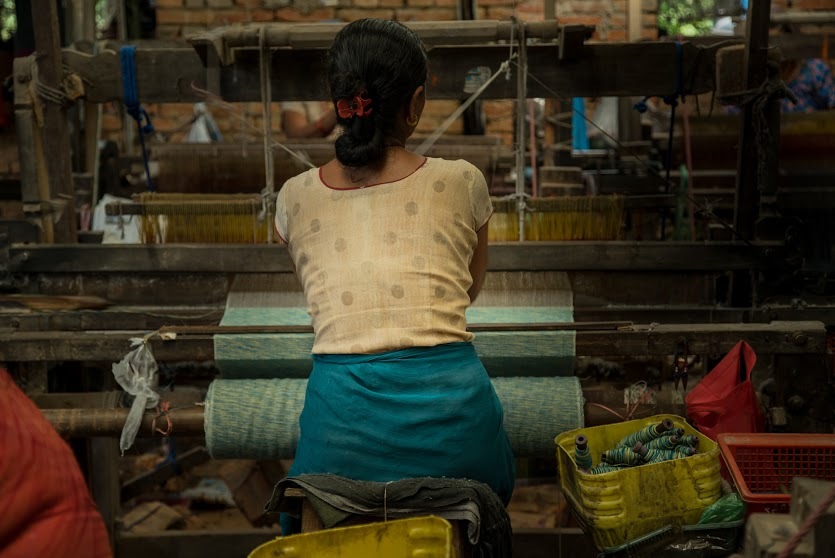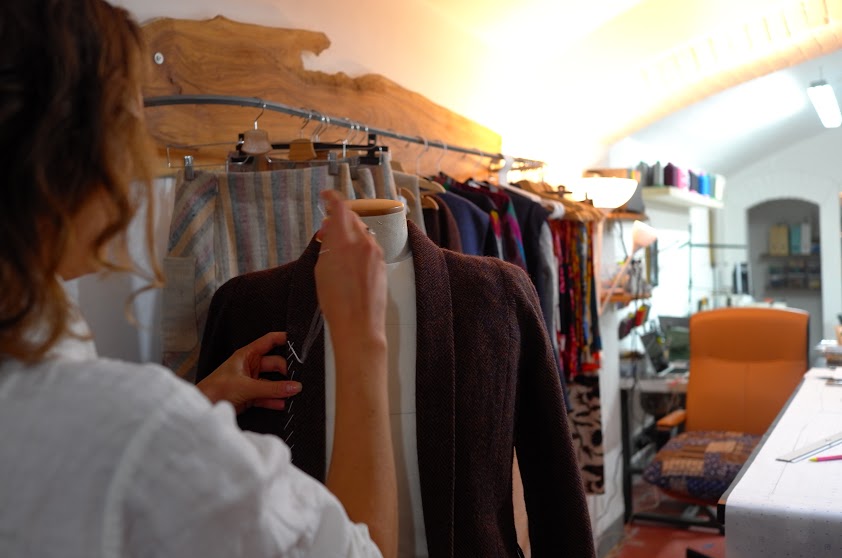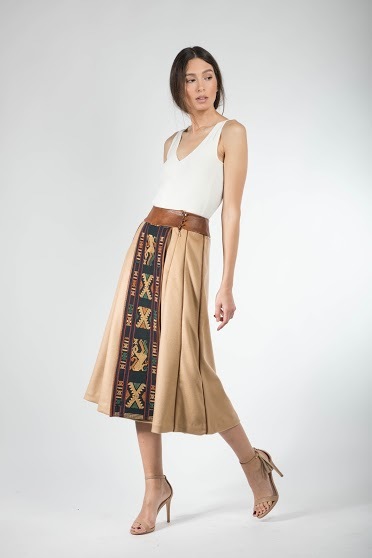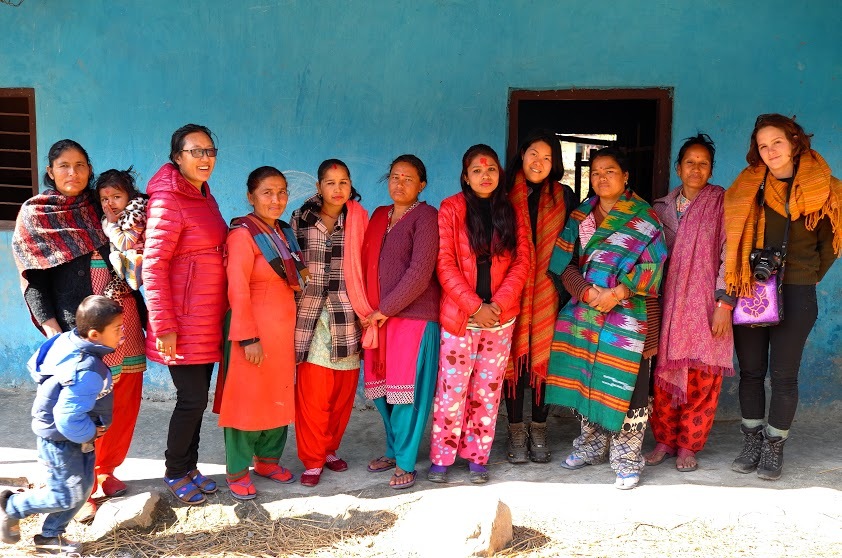Traditional fabrics have taken on a new identity, thanks to a growing number of independent labels that are preserving and growing the traditional methods of textile design. In combining old methods and modern trends, some really interesting garments are coming to the fore of the fashion world, such as the Ikat bikini.
The positive result of such a fashion surge goes beyond eye catching womenswear and nostalgic designs. More importantly it ensures the preservation of tradition and heritage for many artisans worldwide. One company that is helping to drive the popularity of such craftsmanship is The Packing Man. I spoke to Ivanna Jamin, CEO of The Packing Man, to find out more on their mission.
Q. Can you give me some background into how The Packing Man began, what was the main ambition that sparked it all?
The Packing Man is an independently owned, ethical, luxury brand based in Florence, Italy.
Founded in 2015, we began our company with the inspiration of showcasing indigenous textiles of Indonesia, and the art of batik-printing and ikat-weaving in a clothing collection. With the effects of today’s growing industrialized methods of production in the fashion industry, we believe that it is important for us to create a company that travels first hand to meet the makers of traditional textiles and share the story and the history behind the clothing we create.

In the photo: One of The Packing Man’s artisan collaborators Credit: The Packing Man
Q. How does The Packing Man combine sustainable practices with your production techniques?
Our production process starts with who and where we source our textiles from. Whether they are textiles from smaller communities who are practicing traditional techniques or italian fabric producers, we meet the people who make these fabrics and ask them what their process is. How is everything made, are there fair working conditions, are they happy doing what they do, etc.
Then we bring the fabrics back to our studio, catalog them, measure them and determine what is the best way to utilize all of the fabric.
At the moment we have been collecting all of our scraps in hope of a future, zero waste project. We have made two beautiful quilts out of these scraps that we would like to continue in the future.
With our unique supply chain we use for our garments, we produce one prototype in muslin as a test cotton fabric, which we save for our archive, from there we start our final garments. Through this production process we are able to eliminate waste and excess products. Our goal is to only produce the amount that we need so that we are never sitting on an inventory, and through this process we are able to create garments that are completely one of a kind.

In the photo: The Packing Man atelier/workshop Credit: The Packing Man
Q. In practice, how do you go about sourcing artisans and collaborating with them? Any examples?
We have designed our own supply chain where we travel directly to the source to meet the makers behind the textiles. To start with, each project is inspired by the country from which the fabric comes from. We have created our fabric map of traditional textiles from around the world.
When we prepare for a new trip we look at the places we believe have incredible textiles but not much support or awareness. This step has proven to be difficult. However, through extensive research, we have been able to find and meet people who are continuing their incredible traditional craft, creating these textiles.
To protect the weavers and ethically source our textiles, we work with government-supported NGOs, to make sure that what we purchase from the weavers are fair, where the prices for the textiles are fixed by the NGOs. Not only is there the issue of fair trade, but also that knowing that the weavers have a long lasting relationship with the NGOs whose goal is to empower their voice and support a market for the textiles they create.
Our last trip was to Nepal, where we have made two visits so far. We found out about the umbrella corporation of the UNDP (United Nations Development programme) based in Nepal called MEDEP (Micro Enterprise Development Program). After contacting them we were delighted to find that they have an incredible knowledge of the textile industry and are focusing on helping people around Nepal to learn how to weave and continue the traditional craftsmanship. Through MEDEP we were able to meet several weavers, all around the upper western regions of Nepal.
On our second trip to Nepal we were able to go even deeper and meet with different weavers who practice a range of different Nepalese traditional textiles.
Our future trips include Ethiopia, Cambodia, and hopefully many other places. Through sharing our cause, we have been fortunate to meet many people with similar interests, all while continually searching for people who are willing and able to share their beautiful textiles with us, so that we can share their story.

Q. What is the biggest challenge you face as a company?
The problem we face today is that many people are not aware of the transparent process of creating a garment from thread to the final product. And this is what we are trying to achieve by sharing the story of textiles we work with such as the Dhaka, and the many traditional Ikats textiles that we use in our womenswear collection.
Our biggest challenge is to work against the stream of the current consumption cycle, and create an ethical cycle in a fashion where each member of the production process is treated fairly, with a better living quality.
Q. What does the future hold for The Packing Man in your eyes?
The future of The Packing Man, we hope, holds lots of new adventures and discoveries of different textiles. We have become increasingly interested in focusing our concept into our travel and luxury bags to better suit the active lifestyle of our customers. We hope that The Packing Man can make a difference and inspire other brands and consumers to rethink the way they make and buy different pieces.
As we are moving into a world where things have become monotonous and mass produced, we hope that our efforts as well as others will keep the stories of peoples heritage and culture alive and thriving. It is important to not lose ourselves, our past and our culture.
Wherever it may be from, and, whatever it might be, we hope to be an integral part in valuing and cherishing these stories, symbols and techniques. If we lose our past we lose a lot of what we are made of.
We aim to do more collaborations with artists and organizations who are making a positive impact in our world.
Editors Note: The opinions expressed here by Impakter.com columnists are their own, not those of Impakter.com









